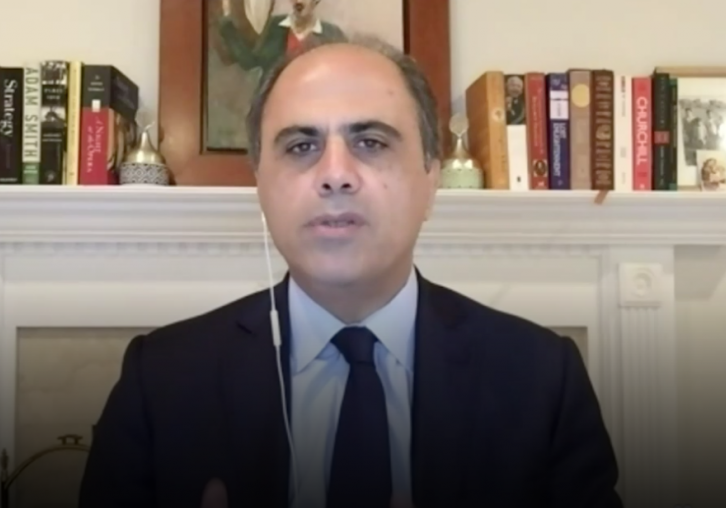IMF predicts a new, grim outlook for oil prices in the Middle East economy amid the COVID-19 crisis
Jihad Azour, director of the IMF’s Middle East and Central Asia department, in a video call with CNBC’s Hadley Gamble on October 18
As new waves of COVID-19 emerge in economic landscapes worldwide, the disparity in oil-importing countries and exporting countries will continue to feel the virus as prices plunge through 2021.
According to CNBC, The International Monetary Fund downgraded its outlook for the Middle East and Central Asian economic recovery, predicting a 4.1% contraction for the region. This is 1.3 percentage points worse than its previous assessment in April.
Jihad Azour, director of the IMF’s Middle East and Central Asia department, reflects on this economic catastrophe with CNBC’s Hadley Gamble via video call on October 18.
“Combined together, those two shocks led to a sharp decline in economic activity that is different between oil-exporting and oil-importing countries. On average, we will see growth going negative by 6.6% for oil-exporting countries, and negative growth of 1% for all importing countries.”
This claim from Azour especially compounds on countries within the GCC, for whom the commodity of exports makes up the majority of revenue.
While prices have recovered from their significant plunge in March of 2020, oil prices will remain under pressure well into 2021. For reference, international benchmark Brent crude is still trading nearly 40% below pre-pandemic levels. Brent stood at $42.87 per barrel on Monday morning in London. This long-term decline could be more catastrophic for the economy than the original plunge in March as the IMF doesn’t see oil prices staging a dramatic recovery anytime soon.
“The projections for oil prices are in the corridor between $40 to $45 for … early next year, and will be between $40 to $50” next year overall, Azour said. “I think what is going to be also important to watch is the recovery in demand. That proved to be an important factor in what we saw this year, in addition to the supply that could come from alternative energies.”
The oil demand outlook remains grim as new waves of COVID-19 grip regions of the world. And with uncertainty about U.S. fiscal stimulus and the U.S. presidential election, the threat in the decline of oil prices and the global economy are staggering.
Azour said the only way to combat this tragedy is to diversify the economy. As challenges to tourism, retail, transportation, real estate continue to expand with COVID-19 restrictions and regulations for social distancing, our world has to find ways to survive outside.
According to CNBC, Real GDP growth for GCC states averaged 4.7% from 2000 to 2016, of which non-oil growth made up a mere 6.4%, according to the IMF’s report. But the oil-reliant Gulf states are now expected to see a 6% real GDP contraction this year, with non-oil sectors comprising 5.7% of that loss.
Source: CNBC
